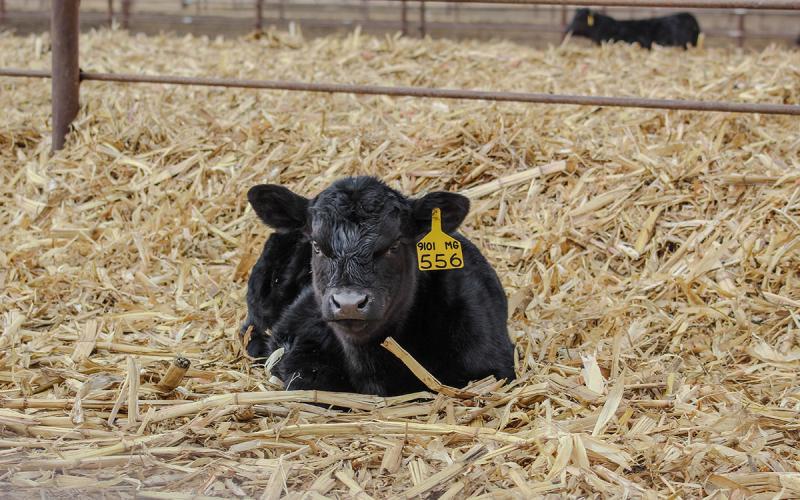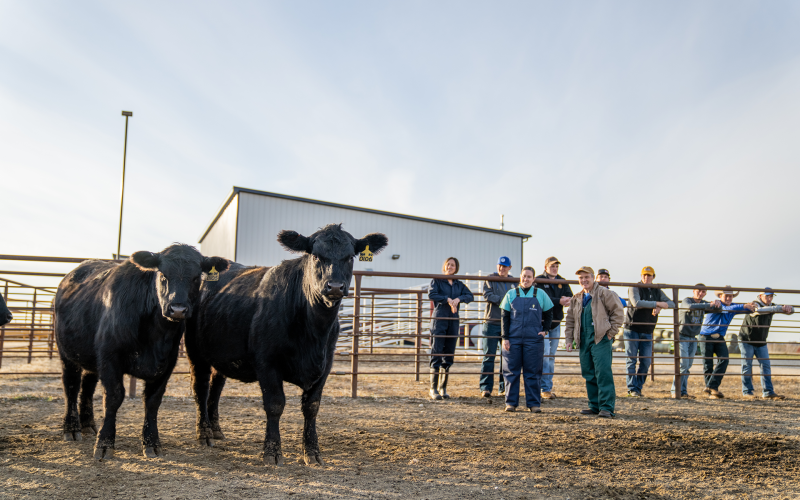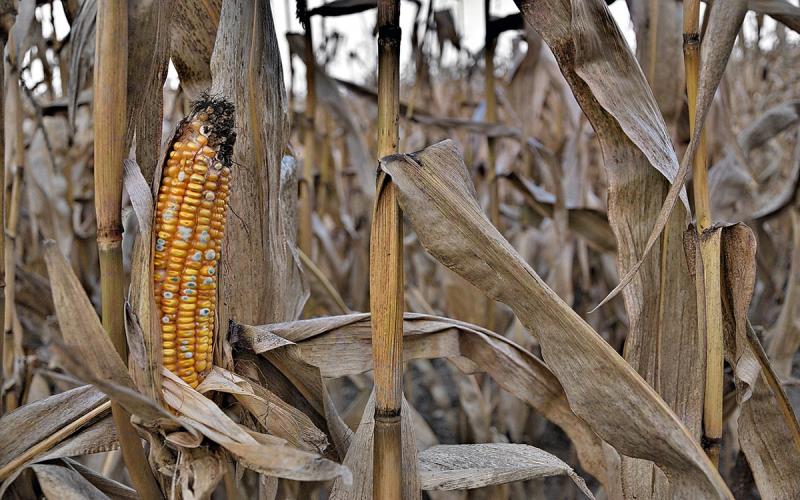Written by Madison Kovarna, former SDSU Extension Beef Nutrition Field Specialist.
Introduction

Castration is a necessary herd management strategy for beef cattle producers across the nation and in South Dakota. Bull calves can be castrated to prevent their ability to breed or to simplify management if a producer does not have the goal to produce yearling or mature bulls. Not all male calves have the high-quality genetics or structure to become a herd bull. Carcasses and beef from steers (castrated male cattle) have improved marbling and tenderness when compared to similar carcasses from intact males.
The various methods of castration typically will get spilt into two categories: bloodless or surgical. Bloodless methods include elastration or use of an emasculatome (example: burdizzo). Elastration works by placing an elastic band around the neck of the scrotum to stop blood flow to the testes and scrotum. Emasculatomes crush the spermatic cords which then stops blood flow to the testes. Surgical castration includes the removal of the testes by creating an incision into the scrotum to remove the testes by severing the spermatic cord.
Castration can cause a temporary reduction in animal performance, such as decreased feed intake and or a lower average daily gain. Traditionally in many systems, pain management is not provided at castration. There have been studies that have looked into the effects of pain management at castration time in terms of feedlot performance, cortisol levels (indicator of stress), behavior, and many other factors. The goal of these studies is to isolate how pain management affects cattle performance and potentially which combination of medications work best. Additionally, studies are trying to isolate if benefits from pain management at castration can be seen through the entire feeding period.
Pain Management Methods
Pain management has many different forms and comes in a variety of products as well. This article will focus on the distinction between an analgesic and an anesthetic. An analgesic is a drug (example: meloxicam) that changes the way the brain perceives pain and/or reduces inflammation. Typically, an anesthetic drug works by interfering with the nervous system's ability to transmit pain signals and induce a state of unconsciousness or reduced sensation. Local anesthetics (example: lidocaine) work by blocking nerve conduction of pain signals from the area of the body to the brain.
A pain management strategy that is newer to the market is lidocaine-infused castration bands. These take away the need to deliver an injection in the banding area (scrotum, spermatic cord, etc). Most of these products are limited to use in calves under 250 pounds, making them ideal for producers castrating calves early, but not so much for producers castrating heavier calves.
Pain management can be a mix of analgesic and anesthetic drugs or one or the other. Deciding what drugs or combination of drugs to use depends heavily on the goal and costs you have in mind. A veterinarian-client-patient relationship (VCPR) is necessary for using either class of drugs, as they require a prescription to obtain.
Why or Why Not?

Several studies have been and are happening at South Dakota State University to examine how pain management affects calf performance. They utilized cattle from the South Dakota State University Cow-Calf Education and Research Facility. This facility has an annual bull sale, which results in a delay in castration until weaning data has been collected, reported, and analyzed by breed associations, and they utilize elastration as a castration method. While these studies were conducted on heavier cattle, they tell an interesting story.
One study conducted by Madison Kovarna and Dr. Cody Wright looked to determine the effects of anesthetic and analgesic administration at castration on feed and water intake, growth, feed efficiency, and carcass characteristics. These bulls weighed 650 to 720 pounds at the time of castration. At castration, calves in the pain management treatment group were given meloxicam according to label directions and a local lidocaine injection totaling15-20 ml at the banding site. In this study, calves that received pain management in the week following castration had a higher average daily gain, which resulted in a better gain-to-feed ratio compared to the non-treated calves. At the conclusion of the study there were no differences in the final performance or carcass characteristics between the two groups of cattle.
The second study to be referenced (conducted by Andrea Brandner, Dr. Cody Wright, and Dr. Ana Clara Menezes) looked at feed and water intake, performance, and blood cortisol levels. This study used bulls that had an average weight of 600 pounds. They had two groups of pain management calves. One group received meloxicam following banding, while the other received both meloxicam and a local lidocaine injection to the banding site. They did not follow these calves through a finishing period and did not collect carcass data. During the duration of the study (7 days pre-castration to 14 days post-castration), no significant differences were seen in feed and water intake, performance, or cortisol levels.
Final Thoughts
Pain management at castration is a topic that will continue to come up as we focus on animal welfare throughout the beef cattle cycle. Research is being done to determine what pain management strategy works best for castration of beef bulls. Intact males (bulls) produce lower-quality carcasses compared to those that come from castrated males (steers). Given this fact and that not all male cattle have the ability to return to the breeding herds, castration will continue to be a management strategy implemented in the beef industry. We will continue to grow in our understanding of pain management strategies at castration.
Studies Referenced
- Kovarna, M., Mucciante, M., Smith, Z., Wright, C., 172 Effects of Anesthetic and Analgesic Administration at Castration on the Dry Matter and Water Intake, Growth, Feed Efficiency, and Carcass Characteristics of Beef Steers, Journal of Animal Science, Volume 101, Suppl. 3, November 2023, Pages 77–78.
- Brander, A., Wright, C., Menezes, A., Effects of Peri-Castration Pain Management Strategies on Feed and Water Intake, Performance, and Blood Cortisol Levels in Weaned Beef Steers, SDSU Animal Science Research Report, Pages 16-17.


